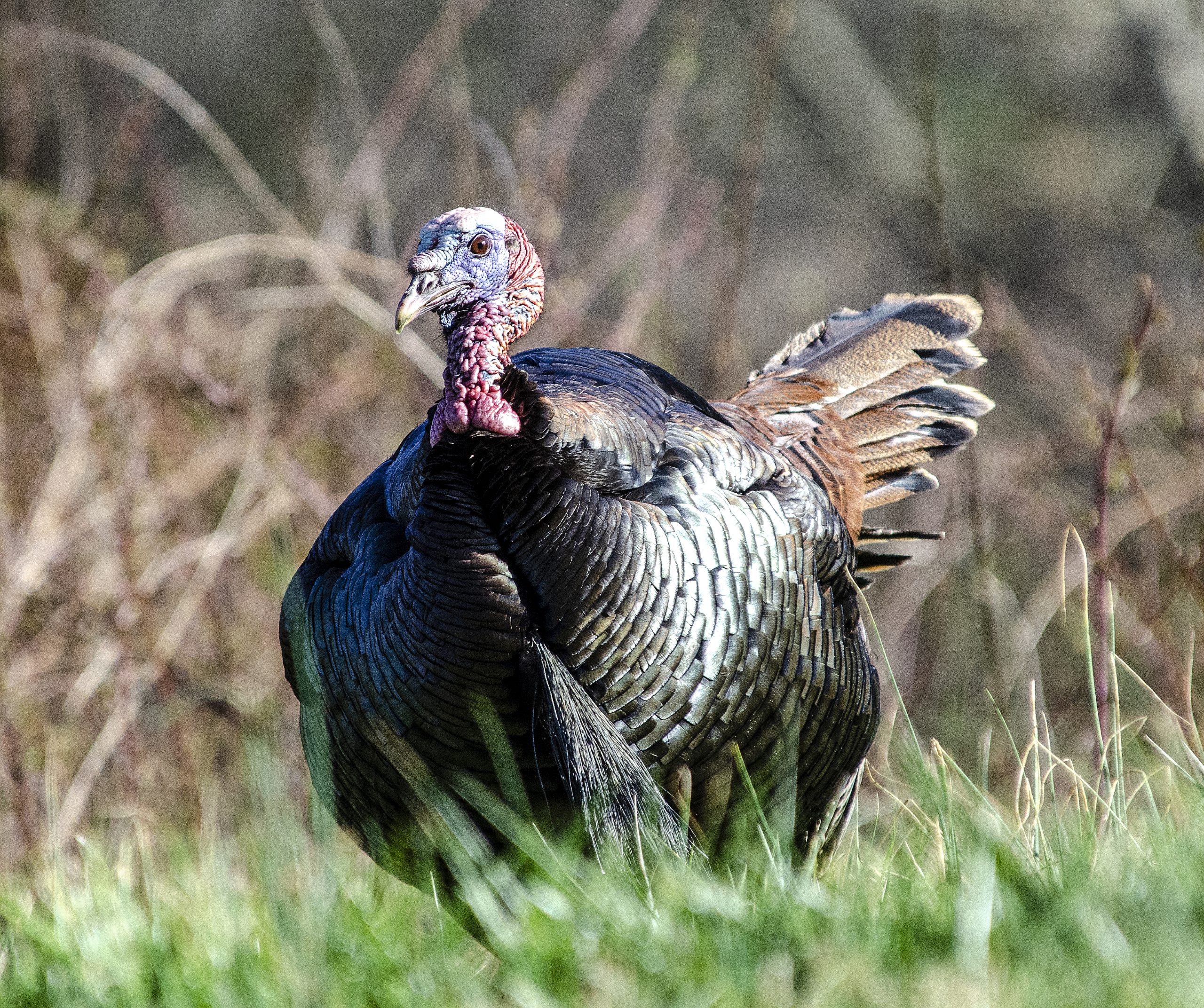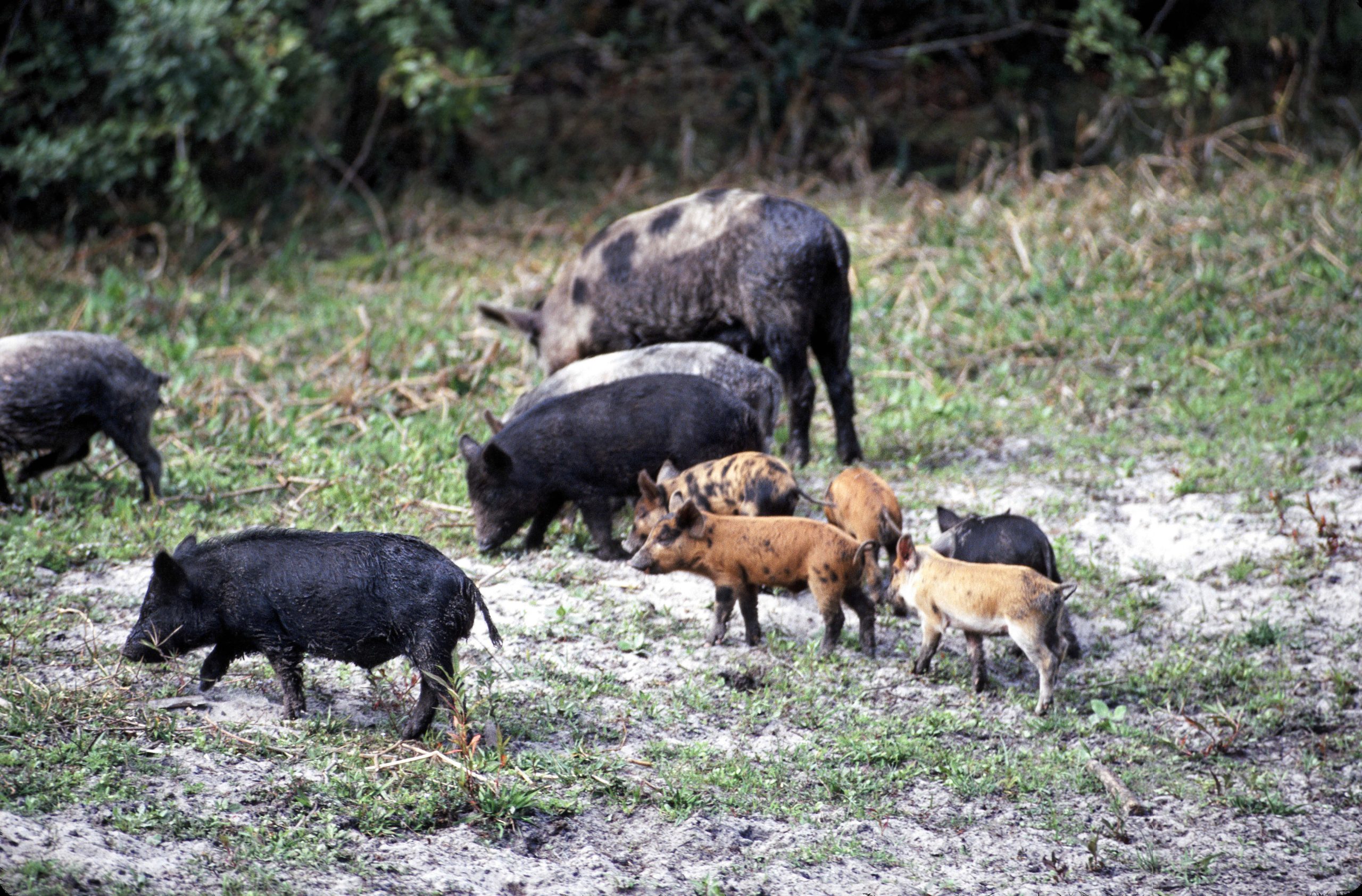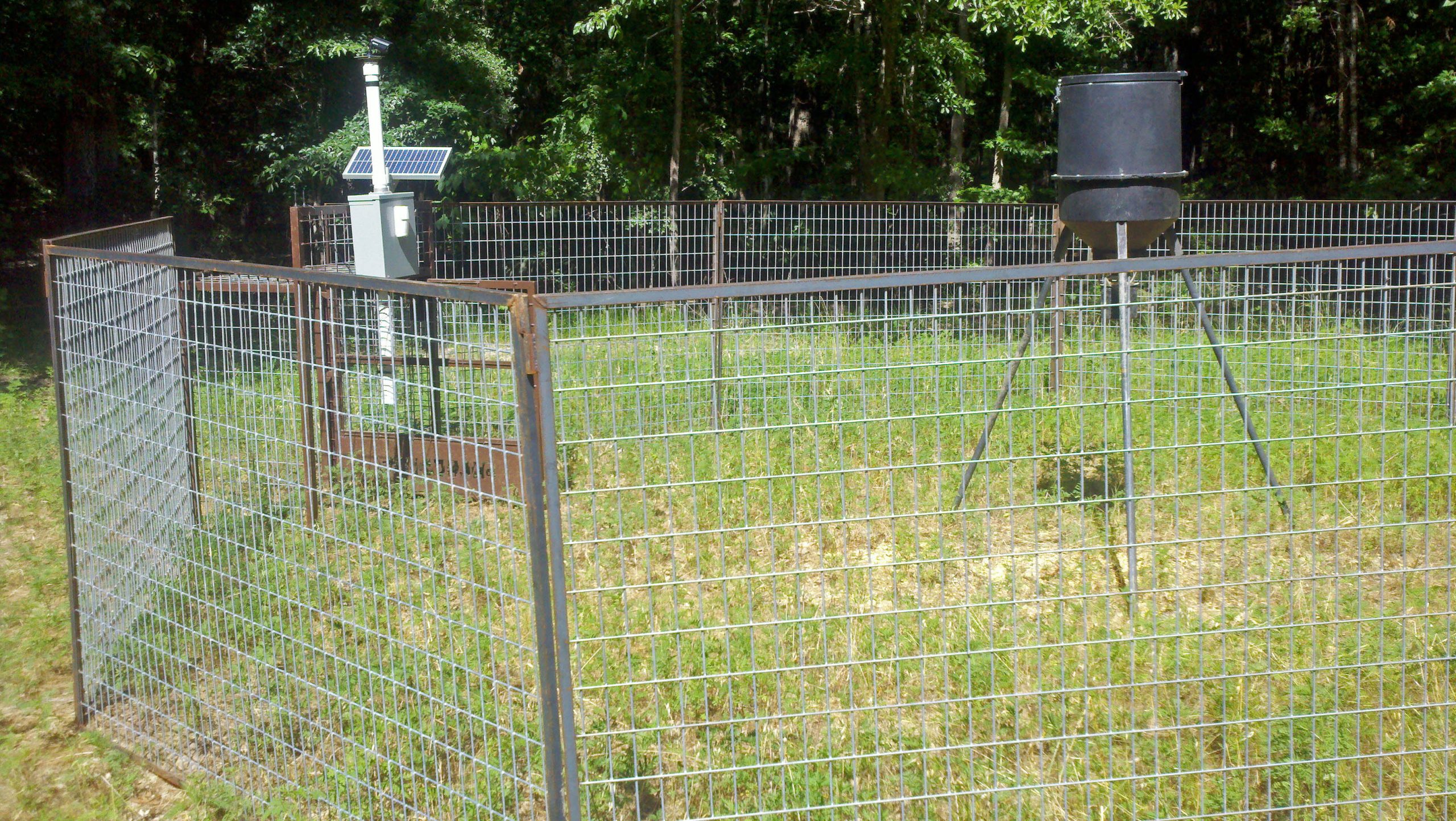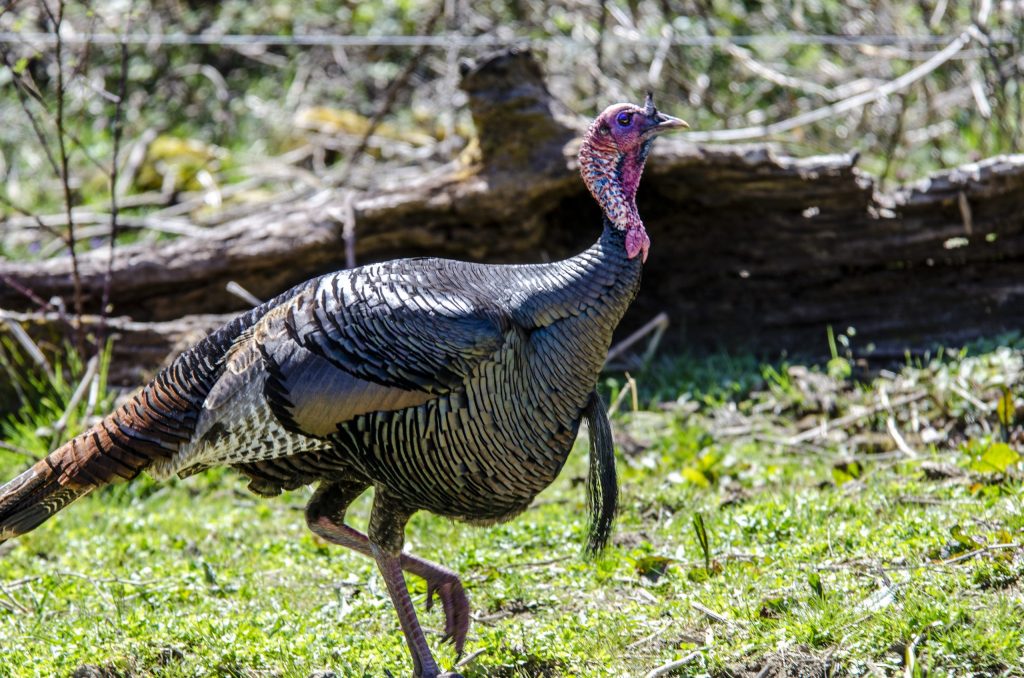How to attract turkeys to your land is a question that wildlife biologists and researchers have been exploring for years. Wildlife biologists and researchers long have known that feral hog numbers detrimentally impact wild turkey populations. These scientists have touted the advantage of feral hog removal to help wild turkey habitat by having more of them survive. Auburn University has conducted a new study for the past three years lead by research assistant Matt McDonough that shows several startling facts:
* Wild turkey numbers increased by 70% when the number of feral hogs removed was equal to the initial population of hogs present.
* Wild turkey numbers increased, sometimes drawing adult turkeys from other places, if the hog numbers were greatly reduced on a property.
* Landowners had to remove at least 50% to 70% of hog populations each year on their properties to bring the hogs under control.
* Pig density reduction meant less turkey nest predation and more acorns for turkeys and deer to eat.
What Auburn University Previously Learned About Feral Hogs
Auburn University has long been interested in the correlation between feral hogs and how they affect croplands and the numbers of wild turkeys. Dr. Stephen Ditchkoff, a professor of wildlife ecology at Auburn, has conducted numerous studies through the years on these nuisance animals and serves on several national committees studying the wild pig problem.

“About 47 of the 50 states have problems with feral hogs. The estimate of crop damage, which biologists believe is widely underestimated, is that besides killing wild turkeys and deer fawns just the annual crop damage from feral pigs is more than $1.5 billion,” Ditchkoff explained. “Texas seems to have the worst problem, and wild pigs also are creating many problems in Hawaii and California, as well as the Deep South.” “Trapping is our best tool to eliminate hogs right now. Shooting hogs out of helicopters also has proven effective where the land is very open. But anyone who traps feral hogs must trap the entire sounder of pigs, a group of related female hogs and their offspring, for the trapping to be effective. And, the trapping must be done every year to keep the numbers of wild pigs in check,” he said.
How McDonough’s Study Was Conducted
McDonough had four separate study sites, ranging from 6,100 to 13,500 acres with feral-hog densities, all located within 15 miles of each other. One site was the control site where turkey populations were monitored, but hogs weren’t removed for comparison purposes. McDonough had one camera for every 250 acres to monitor the turkey populations. The USDA’s APHIS Wildlife Services provided professionals to set-up remote-triggered corral traps for whole sounder removal and to shoot hogs from helicopters. The study learned that removing:
* 657 hogs from Site 1 equaled 226% of the initial hog estimate;
* 879 hogs from Site 2 equaled 125% of the initial hog estimate; and
* 315 hogs from Site 3 equaled 113% of the initial hog estimate and significantly reduced the wild hog populations.
But McDonough also learned that these measures didn’t eradicate the hog problem, due to the rapid reproduction of hogs, although the numbers of wild turkeys improved. Each female wild pig could produce up to three litters per year with up to 12 piglets per litter, possibly resulting in 15-35 piglets per female wild pig (females are capable of reproducing at age 7 months) per year. When you compare those numbers to wild-turkey hens that each produce clutches of up to 14 eggs each per year, understanding the growing problem of nest predation by hogs and how that impacts wild-turkey numbers is simple so dealing with these species is paramount when considering how to attract turkeys to your land.
Nest Predator Effects On Wild Turkey Habitat Population
Tad Brown of Missouri has been an avid turkey hunter for 45 years and a trapper for 50 years. Like many of us, Brown realizes that turkey populations have been on the decline for several years now and believes the increasing numbers of nest predators has detrimentally impacted wild-turkey numbers.

“I know that every furbearer I take that’s not a water animal eats turkey eggs, turkey poults and turkey adults. The numbers of trappers have decreased each year with fur prices so low, which definitely has increased furbearers’ numbers,” he said. “You must continue trapping every year to stay ahead of the declining numbers of turkeys with wild hogs being the biggest culprit. But I also know bobcats, coyotes, snakes, opossums, crows, skunks, feral cats, feral dogs and armadillos all love to eat turkey eggs and turkey poults. However, I’m convinced that raccoons are particularly a tough predator on turkeys. Raccoons are very prolific, they’re aggressive and strong, and they can muscle a hen off her nest to kill her and eat her eggs.”
Additional Reasons To Trap Feral Hogs And Nest Predators
According to the National Deer Report presented by the National Deer Association, an average of 88% of the white-tailed deer harvest across the U.S. occurs on private lands. Texas reports the highest number of private land deer harvested at 99% with Alabama coming in at 95% for private land harvests of deer.

So, private landowners and lessees have the ability to make a huge difference in harvests of turkeys and deer. Each year, billions of dollars are spent clearing land, planting and fertilizing green fields, putting out feeders and raising crops for deer and turkeys on private lands. However, for a fraction of this amount, private land lessees and landowners can borrow, buy and/or rent corral traps to remove sounders of wild hogs off their lands and hire trappers to remove nest predators to greatly increase the numbers of turkey and deer on their lands. The Auburn University studies support the premise that trapping and removing feral hogs can aid in stopping the declining trend of wild turkey numbers and is a great place to start when considering how to attract turkeys to your land.
How To Attract Turkeys To Your Land
The quickest way to attract turkeys to hunt on your lands is to conduct a hog-removal program before turkey season and a trapping regime of these other nest predators before and after turkey season. Although improving habitat for turkeys and planting small-grain green fields also helps your property to produce and hold turkeys, predator removal, particularly of wild hogs, appears to be the quickest way to have more turkeys in the least amount of time. As a landowner or a property lessee, to have more turkeys and deer, consider removing as many feral hogs as possible, as well as nest predators.
You can contact the National Deer Association and/or go find more information about wild hogs impact on wild turkey habitat here.
How To Trap Feral Hogs With Dr. Stephan Ditchkoff
1) Use bait and trail cameras to find a group of hogs coming in and feeding on that bait.
2) Try to identify each pig in that group of hogs once you have trail-camera pictures of all the hogs in the sounder to know that the sounder is composed of perhaps 8 individuals, 10 individuals or possibly 12 individuals. You need to be able to determine if there’s 6 or 8 adult individuals, or perhaps 4 to 5 juvenile pigs in that sounder.
3) Build a trap that will hold the entire sounder, start baiting the trap, and watch the hogs coming into the trap. You continue that baiting with the door to the trap up and open, so the pigs can get to the bait. Don’t try to catch the hogs, until you’re absolutely sure you have all the individual hogs from the sounder in that trap.
4) Use a remote device that will drop the door to the trap once all the hogs in the sounder are inside the trap. New types of traps and doors can send pictures to your cell phone, computer, tablet or other device, so that you can see how-many hogs are in a sounder and identify the hogs in the trap. Once you’re convinced you’ve got the entire sounder, you can activate the app on your phone, which automatically will drop the door on the trap, preventing the pigs from getting out.
5) Go to your trap, dispatch all the wild pigs, take them out of the trap, and dispose of them.
6) Continue to bait the trap to make sure that you’ve eliminated every hog in that sounder.

Final Thoughts
The study led by Matt McDonough sheds light on the significant impact of feral hog removal on wild turkey habitat. With wild turkey populations increasing by up to 70% following the removal of feral hogs, it’s evident that trapping plays a crucial role when considering how to attract turkeys to your land. However, the study also highlights the challenges posed by the rapid reproduction of hogs, emphasizing the need for ongoing trapping efforts to maintain control. Tad Brown, an experienced trapper and turkey hunter, emphasizes the importance of addressing not only feral hogs but also other nest predators to safeguard turkey populations. As private landowners hold the key to conservation, implementing trapping programs before and after turkey season can effectively enhance wild turkey habitat. By taking proactive measures to remove feral hogs and nest predators, landowners can contribute to the preservation of wild turkey habitat and deer populations, ensuring a thriving ecosystem for generations to come.




